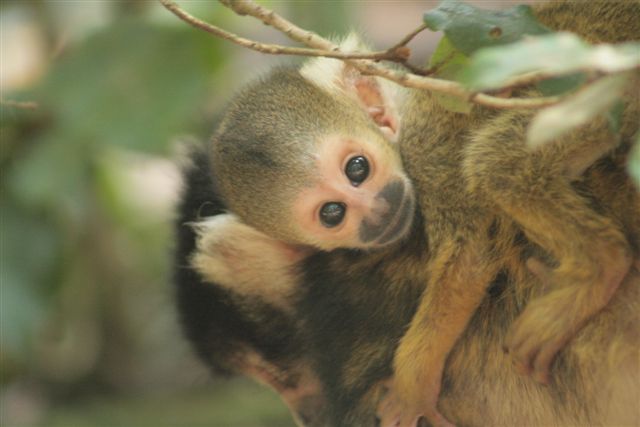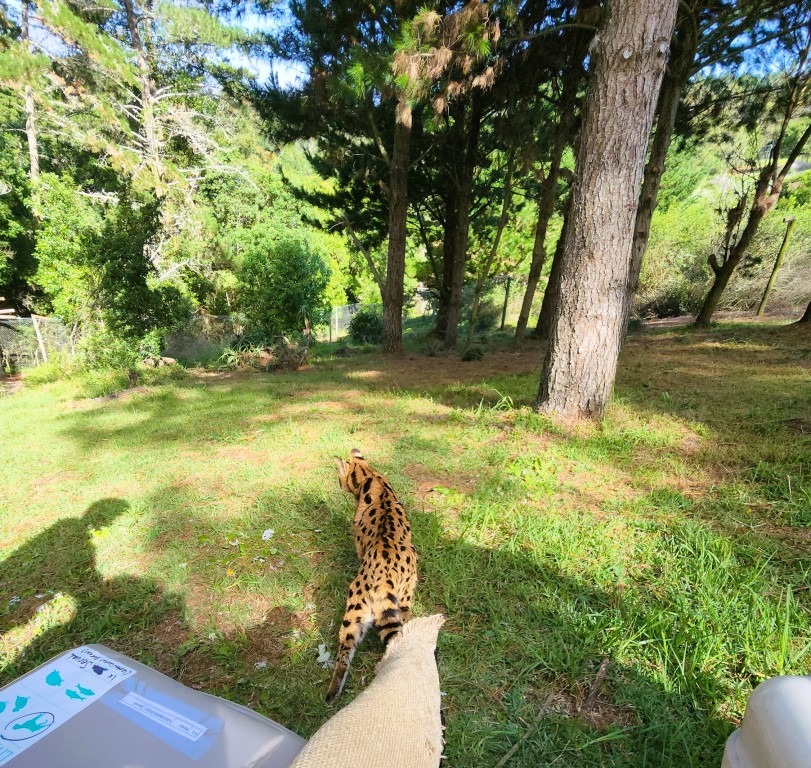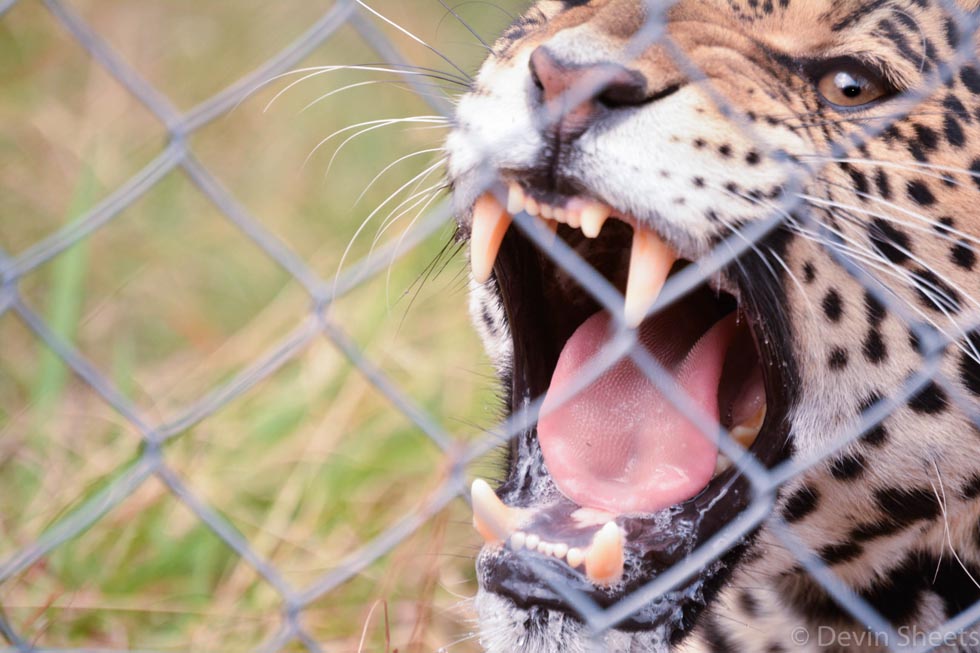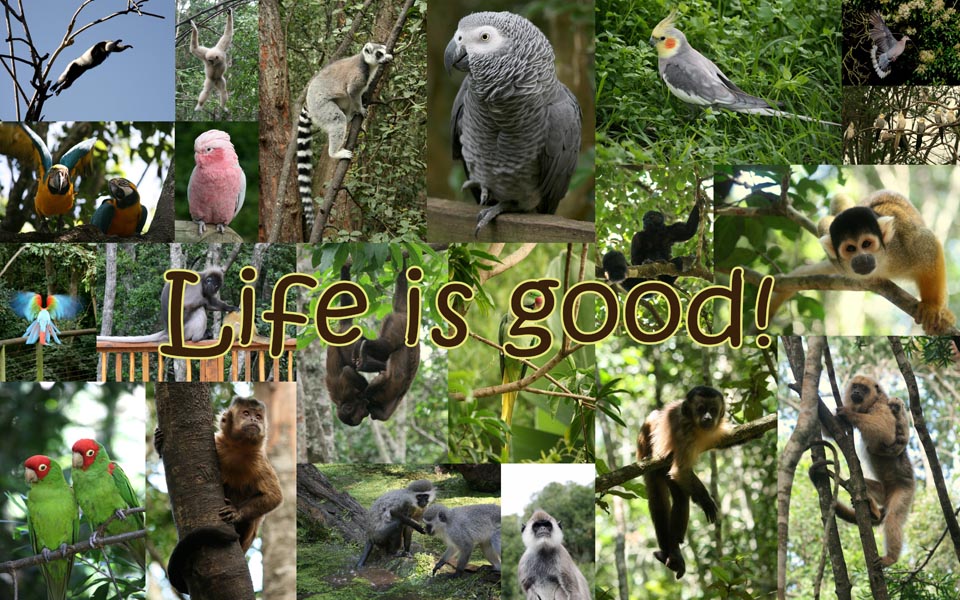Written by Anna Breytenbach
As promised, here’s an overview about why petting of wildlife – even/especially young animals – is a dangerous and unethical practice. I wrote this some time back in addressing concerns about the majority of animal parks who thrive on this tourist activity under the thin excuse of conservation education. I offer this view in an effort to ensure the long-term survival of the few ethical places where good practices and conservation messages can continue to raise public awareness about the challenges facing wildlife worldwide. In my opinion, many establishments could learn a lot from the integrity that operations like Monkeyland and Birds of Eden bring to ecotourism.
By way of introduction, let me first explain that the points below come from my personal experience as a trained cheetah handler and wolf wrangler. I worked at Cheetah Outreach in Stellenbosch for many years from their inception in 1998, and have had several years’ experience working with wolves, cougars and other wild cats in the USA and Canada also – all in a conservation education setting. This included working with the public coming to sanctuary facilities, training volunteers and zoo staff in safe handling practices, and setting up protocol and procedures at various rehabilitation centres. I am still a director of a non-profit wild feline rescue facility in the USA even though I live back in my native South Africa. Most of my work now involves captive wildlife and addressing the stress they are under at the hands of humans – literally.
From both the “perception” and protocol/safety points of view, the following points bear consideration:
1. Allowing members of the public to play with predators/other wild animals can give the wrong impression that:
a) they are suitable animals to have as pets (instead of focusing energy on keeping them in the wild where the real conservation is needed, particularly of endangered species.)
b) monies paid for these encounters are actually going towards conservation. For example, almost all the places in South Africa that offer the petting of (white) lion cubs are in fact supporting the abominable canned breeding and hunting industry. Members of the public are not discerning, and wouldn’t think to check out the credentials of places taking payment/profit for petting encounters.
c) the animals are “domesticated” or tame – instead of people appreciating the truth that these are still wild animals (only captive-born) with their instincts thinly below the surface, ready to surface at any time upon instruction from their innate genetic coding.
Perception is everything, and unfortunately allowing members of the public to handle captive wild animals is doing those species more harm than good. People can still appreciate them “up close and personal” through the fences. In fact in many ways people can better have the appropriate amount of respect, intrigue and awe for a wild animal that is a little distance from them rather than being handled like/mistaken for a tame pet.
2. Crouching down lower than eye-level in front of and next to cheetahs, lions and tigers gives the cats the “upper hand” if they are suddenly triggered or get upset. This is endangering the lives of their handlers and the visitors in with them.
3. Having people in enclosures with the animals unrestrained is dangerous. Swipes, scratches and bites by the animals is commonplace. The animals to do this to adults, but having children go in is even more dangerous. Predators can very easily – and unpredictably – switch into seeing something smaller than themselves as prey. And even if not “prey” as such, the mere size difference can make the cats regard children as playthings, with very unpleasant results.
There is no leash or other way of averting a disaster if an animal does decide to lunge. No matter how well-mannered they are usually, they can respond negatively to something as arbitrary as someone’s perfume, sunglasses, hairstyle or mood on any given day – and in a moment be transformed into an “attack” mode.
4. Allowing cubs to suck the thumbs of human handlers or visitors is far from cute. It’s dangerous – as much for the animal’s sake as for humans’ safety. It reinforces dependent behaviour – which is at odds with the animal maturing into a young adult. It keeps them in the physical-emotional experience of satisfying some degree of “separation anxiety” and seeking comfort from an inappropriate source, instead of getting over that and growing up to be the full adult that they can be. Plus there are obvious dangers to having human flesh so close to strong teeth and jaws.
As an aside, some cruel establishments have the claws and/or teeth of captive predators removed to minimise danger to humans. This compromises the animal’s ability to eat, groom, defend itself and climb. These surgeries also often result in permanent nerve damage and pain for the animal all day every day of their remaining lives.
5. On a related note, there is no regard for infection control. There are many zoonotic diseases that pass between humans and other mammals – in both directions. The usual protocol is no touching of animals around their mouths or heads for this reason. Usually it’s the animals who get viral and bacterial infections from humans, but diseases pass the other way too. Staff who come into contact with the animals should be dewormed regularly as a matter of course as a minimum precaution.
6. Physically rough play with young animals is unacceptable. Given their increasing size and strength as they grow, this necessarily means that the playing involves a lot of pushing against the animal, resisting them and restricting them… which in turn makes them (even playfully) “fight back”. This is not a good pattern of interaction to get into with a growing predator of any species! Whilst they will “know” what is appropriate force or not in the future, their ever-stronger bodies may not be able to contain their strength in the throes of excited play.
7. Having to discipline the animals physically (nose-tapping, or worse) elicits resentment or anger from them at times. Animals do remember, and can develop grudges against us so easily – grudges which they will act upon when the human’s back is turned.
8. Handlers are not safe – and neither are the visitors. There is seldom a practice of back-up handlers/two people near an animal at all times – for assistance should something go wrong. One of the primary causes of injuries to handlers is “transferred aggression”. This is where an animal suddenly becomes upset at something outside the cage, and the nearest scapegoat to turn and attack in a burst of distress is the handler inside the cage with them. I have personally seen many handlers injured this way, including a 6”2” experienced handler have his cheetah (with whom he had a strong love bond for two years) turn on him (at the other end of his leash) and injure him very badly, severing his femoral artery and requiring this man to be hospitalised for emergency surgery and 150 stitches. This “just” from a cheetah, known to be the least dangerous of all the big cats.
9. Enclosures are often too small for animals sharing space. There is not sufficient space in their very public enclosure for them to let off steam in a healthy way. Animals need sufficient space and foliage or features to allow them exercise and some respite from a day of people; literally a place to hide from human eyes if they wish.
With every day that goes by in a petting environment, the probability increases of a serious injury happening. Small injuries happen to most handlers during their career, and these people usually accept responsibility for those occurrences. Tourists do not have the same knowledge or sensibility, however, and some international tourists (probably a large proportion of visitors) react in a very severe way with legal action and financial implications.
In closing, I’d like to share this very eloquent article by a “voluntourist” about her experiences at a petting facility in South Africa.
http://lionexploitation.wordpress.com/real-life-experiences/kirstens-blog/
Kind regards, Anna anna@animalspirit.org








